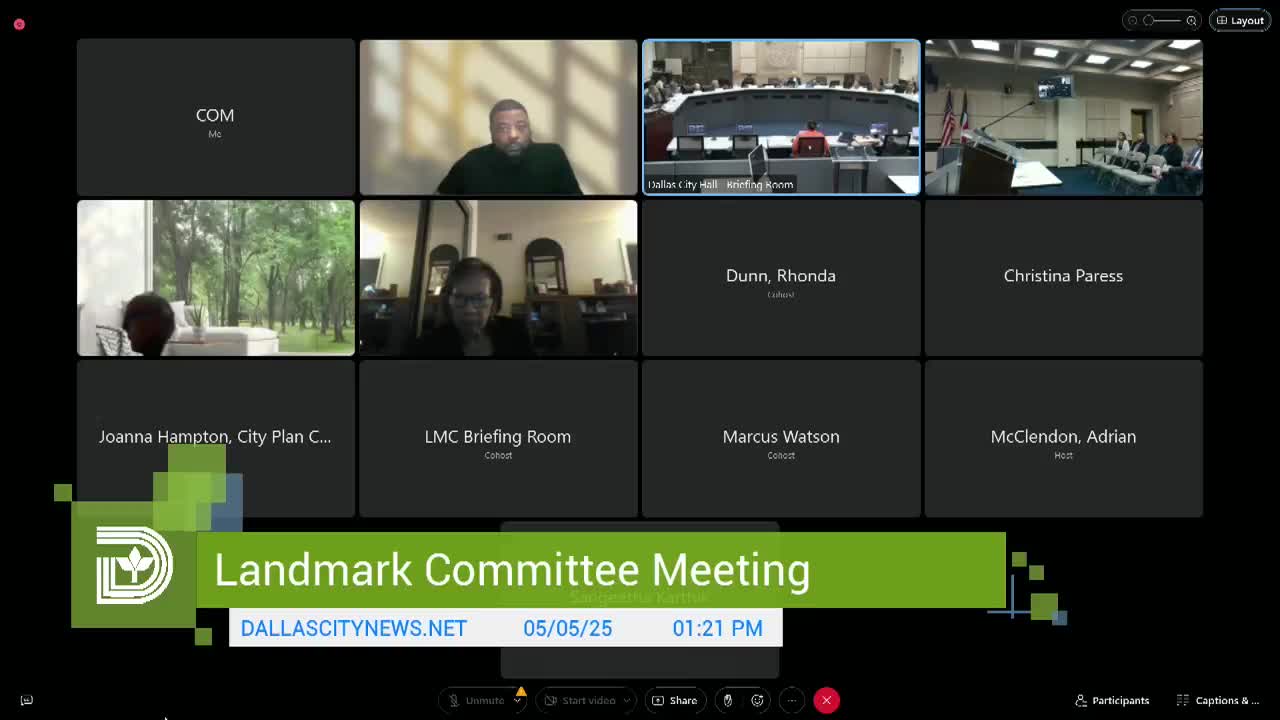Commission Examines Demolition Process and Safety Concerns for Historic Building
May 05, 2025 | Dallas, Dallas County, Texas
This article was created by AI summarizing key points discussed. AI makes mistakes, so for full details and context, please refer to the video of the full meeting. Please report any errors so we can fix them. Report an error »

In a recent meeting held at Dallas City Hall, city officials engaged in a detailed discussion regarding the future of a historic building facing potential demolition due to safety concerns. The atmosphere was charged with urgency as commissioners deliberated on the implications of "demolition by neglect," a term that surfaced repeatedly during the session.
The conversation began with a focus on the procedural aspects of addressing properties deemed at risk. Commissioner Anderson highlighted the importance of a task force that had previously examined the building, seeking clarity on its current status and the necessary steps moving forward. The dialogue revealed a complex web of past applications for repairs that had not been completed, raising questions about the accountability of the responsible parties.
As the discussion progressed, the topic shifted to the structural integrity of the building. Concerns were raised about the costs associated with shoring up the structure, which would involve extensive bracing to ensure safety during repairs. The estimated cost of $75,000 for immediate stabilization was met with skepticism, as commissioners sought to understand the long-term financial implications of maintaining the building.
The meeting also touched on the community's desire to preserve elements of the building's historic facade. Several commissioners expressed a commitment to exploring options that would allow for the retention of significant architectural features, rather than opting for complete demolition. This sentiment echoed a broader concern about the loss of cultural heritage in the face of urban development.
As the session drew to a close, the city attorney provided clarity on the legal standards governing demolition requests, emphasizing that any decision must consider whether the structure poses an imminent threat to public health and safety. This legal framework will guide the commission's forthcoming decisions as they weigh the balance between preservation and safety.
The discussions at this meeting reflect a critical moment for Dallas, as city officials grapple with the challenges of maintaining historic structures while ensuring the safety of their communities. The outcome of these deliberations will not only impact the future of the building in question but also set a precedent for how the city approaches similar cases in the future.
The conversation began with a focus on the procedural aspects of addressing properties deemed at risk. Commissioner Anderson highlighted the importance of a task force that had previously examined the building, seeking clarity on its current status and the necessary steps moving forward. The dialogue revealed a complex web of past applications for repairs that had not been completed, raising questions about the accountability of the responsible parties.
As the discussion progressed, the topic shifted to the structural integrity of the building. Concerns were raised about the costs associated with shoring up the structure, which would involve extensive bracing to ensure safety during repairs. The estimated cost of $75,000 for immediate stabilization was met with skepticism, as commissioners sought to understand the long-term financial implications of maintaining the building.
The meeting also touched on the community's desire to preserve elements of the building's historic facade. Several commissioners expressed a commitment to exploring options that would allow for the retention of significant architectural features, rather than opting for complete demolition. This sentiment echoed a broader concern about the loss of cultural heritage in the face of urban development.
As the session drew to a close, the city attorney provided clarity on the legal standards governing demolition requests, emphasizing that any decision must consider whether the structure poses an imminent threat to public health and safety. This legal framework will guide the commission's forthcoming decisions as they weigh the balance between preservation and safety.
The discussions at this meeting reflect a critical moment for Dallas, as city officials grapple with the challenges of maintaining historic structures while ensuring the safety of their communities. The outcome of these deliberations will not only impact the future of the building in question but also set a precedent for how the city approaches similar cases in the future.
View full meeting
This article is based on a recent meeting—watch the full video and explore the complete transcript for deeper insights into the discussion.
View full meeting
